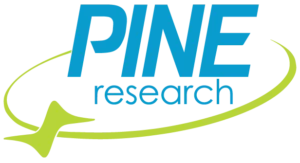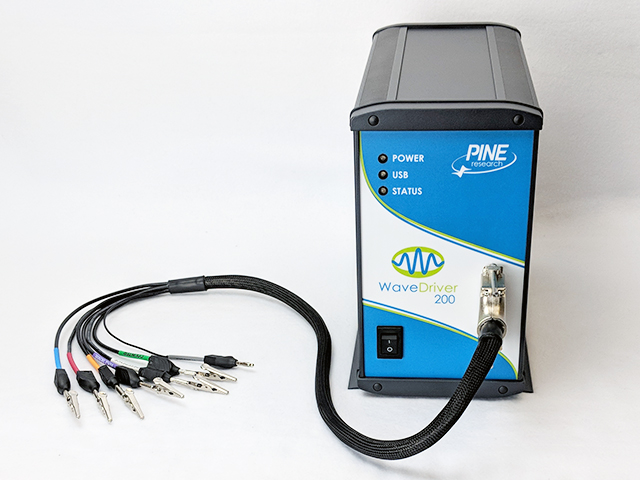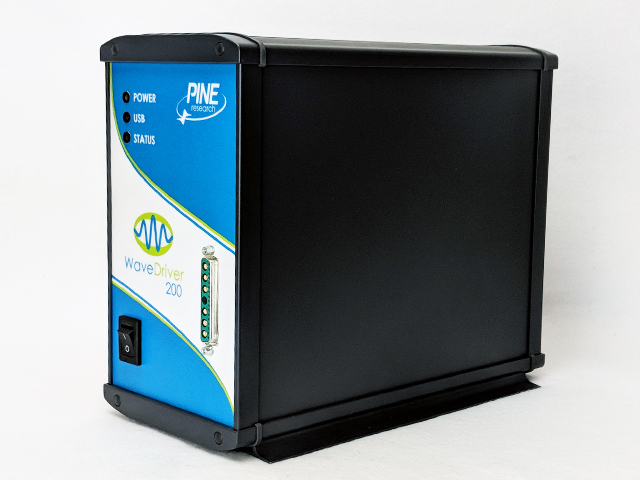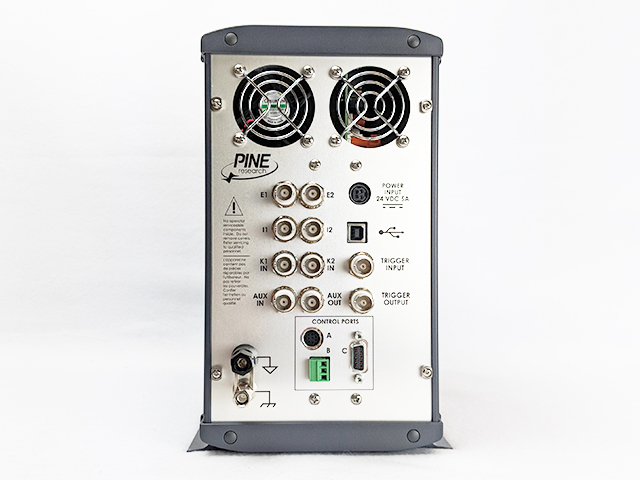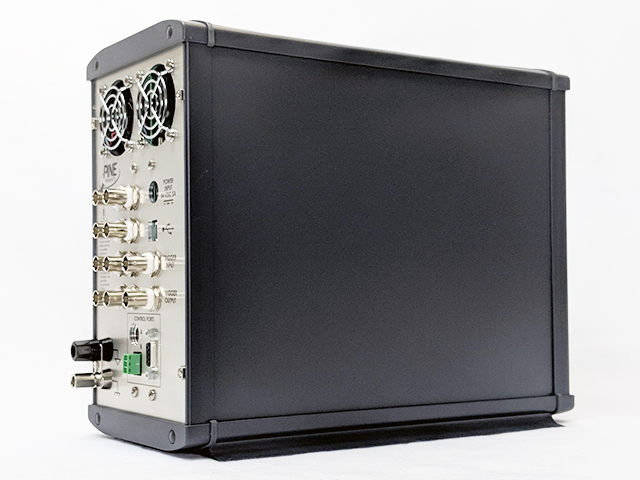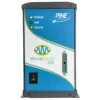WaveDriver 200 Electrochemical Workstation
This WaveDriver® 200 Workstation is a versatile bipotentiostat/galvanostat, dual-electrode, research-grade, performance-driven system with potentiostat, galvanostat, EIS, open-circuit potential, and zero resistance ammeter modes of operation. Under the control of our powerful AfterMath® Blue software package, the WaveDriver 200 EIS electrochemical workstation is capable of performing Electrochemical Impedance Spectroscopy (EIS) along with a wide variety of single and dual electrode DC electroanalytical techniques. The WaveDriver 200 is a true integrated bipotentiostat, capable of controlling one or two working electrodes operating in the same electrochemical cell along with a counter and reference electrode, making this instrument ideal for Rotating Ring-Disk Electrode (RRDE) voltammetry.
This product can only be purchased in bundles. View these related bundles in the tab below.
Customers must be logged into their account to view prices. Not all regions provide pricing online. If you do not see prices, you can obtain them from the designated sales channel in your region.
Every purchase of a WaveDriver 100 electrochemical workstation includes a free one-hour online training session! Contact Pine Research to inquire about this free session.
This product requires a power cord to connect to AC mains. Please specify the plug style used in your region when you order this product. We stock a variety of power cords.
The WaveDriver 100 is a single channel electrochemical workstation with EIS, whereas the WaveDriver 200 is a two-channel bipotentiostat electrochemical workstation with EIS. The WaveDriver 40 does not have EIS, and is a two-channel bipotentiostat. Other specifications are shared among all current models of the WaveDriver Series.
- Wagner, A.A.; Clarke, T.B.; Perez Herrera, D.; Thompson, D.H.; Payne, E.M.; Dick, J.E. Considerations for Accurate Soft Particle Sizing Using Stochastic Electrochemistry. ACS Electrochem. 2025.
- Todorov, J.; McCarty, G.S.; Sombers, L.A. Mechanistic Insight into Tyrosine Oxidation at Carbon-Fiber Microelectrodes Revealed by Fast-Scan Cyclic Voltammetry. ACS Electrochem. 2025.
- Li, H.; Hansen, L.; Aliyeva, A.; Wang, J.; Qiu, H.; Müller, M.; Chen, S.; Aktas, C.; Kienle, L.; Hartke, B.; Benedikt, J. Plasma-engineering of Pt-decorated NiCo2O4 nanowires with rich oxygen vacancies for enhanced oxygen electrocatalysis and zinc-air battery performance. Applied Catalysis B: Environment and Energy 2025, 361, 124607.
- Bredar, A.R.C.; Margavio, H.R.M.; Donley, C.; Spinner, N.; Amin, N.; Parsons, G.N.; Dempsey, J.L. Oxidation Temperature-Dependent Electrochemical Doping of WO3 Deposited via Atomic Layer Deposition. J. Phys. Chem. C 2024, 128, 21539-21550.
- , . In-situ spectroelectrochemical analysis: Irreversible deformation of cesium lead bromide Perovskite Quantum Dots in SiOx matrices. 2024, 8, 100208.
- Lyu, X.; Yang, J.; Serov, A. Is Pt dissolution a concern from the counter electrode in electrochemical oxygen evolution reaction?. Electrochimica Acta 2024, 501, 144824.
- Isaacs, D.P.; Dempsey, J.L. Synthesis and characterization of a series of CpW(CO)2PR3H, [CpW(CO)2PR3]−, [CpW(CO)2PR3(CH3CN)]+, and [CpW(CO)2PR3]2 complexes. Inorganica Chimica Acta 2024, 571, 122238.
- Zuccante, G.; Acciarri, M.; Vecchio, C.L.; Gatto, I.; Baglio, V.; Pianta, N.; Ruffo, R.; Navarini, L.; Santoro, C. Oxygen reduction reaction platinum group metal-free electrocatalysts derived from spent coffee grounds. Electrochimica Acta 2024, 492, 144353.
- Ngozichukwu, B.; Pranada, E.; Johnson, D.; Djire, A. Nanolayered Ti4N3Tx MXene Retains Its Electrocatalytic Properties after Prolonged Immersion in Solvents. ACS Appl. Nano Mater. 2024, 7, 13765-13774.
- Xue, F.; Fu, X.; Kang, S.; Sheng, X.; Li, B.; Shen, P.K.; Zhu, J.; Nie, M.; Lu, S.; Lu, W. Mo-Based MXene-Supported Pt Nanoparticles for Highly Durable Oxygen Reduction in Acidic Electrolytes. ACS Appl. Nano Mater. 2024, 7, 6305-6314.
- Zhang, P.; Chen, H.; Zhu, H.; Chen, K.; Li, T.; Zhao, Y.; Li, J.; Hu, R.; Huang, S.; Zhu, W.; Liu, Y.; Pan, Y. Inter-site structural heterogeneity induction of single atom Fe catalysts for robust oxygen reduction. Nat Commun 2024, 15, 2062.
- Lyu, X.; Bai, Y.; Li, J.; Tao, R.; Yang, J.; Serov, A. Investigation of oxygen evolution reaction with 316 and 304 stainless-steel mesh electrodes in natural seawater electrolysis. Journal of Environmental Chemical Engineering 2023, 11, 109667.
- Lin, C.; Zhang, H.; Zhang, X.; Liu, Y.; Zhang, Y. Kinetics-Driven MnO2 Nanoflowers Supported by Interconnected Porous Hollow Carbon Spheres for Zinc-Ion Batteries. ACS Appl. Mater. Interfaces 2023, 15, 14388-14398.
- Cetindere, S.; Ardic Alidagi, H.; Anjass, M. Two novel Anderson-type polyoxometalate based MnIII complexes constructed from pyrene derivatives: Synthesis, photophysical, and electrochemical properties. Inorganica Chimica Acta 2023, 545, 121280.
- Lu, X.; You, W.; Peltier, C.R.; Coates, G.W.; Abruña, H.D. Influence of Ion-Exchange Capacity on the Solubility, Mechanical Properties, and Mass Transport of Anion-Exchange Ionomers for Alkaline Fuel Cells. ACS Appl. Energy Mater. 2023, 6, 876-884.
- Lin, C.; Liu, Y.; Zhang, X.; Miao, X.; Chen, Y.; Chen, S.; Zhang, Y. Regulating the plating process of zinc with highly efficient additive for long-life zinc anode. Journal of Power Sources 2022, 549, 232078.
- Raj, S.K.; , .; Sharma, V.; Srivastava, D.N.; Kulshrestha, V. Single-Step Synthesis of Well-Ordered Hierarchical Nickel Nanostructures for Boosting the Oxygen Evolution Reaction. Energy Fuels 2022, 36, 13786-13795.
- Molodtsova, T.; Gorshenkov, M.; Kubrin, S.; Saraev, A.; Ulyankina, A.; Smirnova, N. One-step access to bifunctional γ-Fe2O3/δ-FeOOH electrocatalyst for oxygen reduction reaction and acetaminophen sensing. Journal of the Taiwan Institute of Chemical Engineers 2022, 140, 104569.
- Guo, Q.; Li, H.; Wang, S.; Gong, Y.; Ren, L.; Yu, G. Experimental study on preparation of oxygen reduction catalyst from coal gasification residual carbon. Chemical Engineering Journal 2022, 446, 137256.
- Xu, W.; Yoon, D.; Yang, Y.; Xiong, Y.; Li, H.; Zeng, R.; Muller, D.A.; Abruña, H.D. MOF-Derived Bimetallic Pd–Co Alkaline ORR Electrocatalysts. ACS Appl. Mater. Interfaces 2022, 14, 44735-44744.
- Lyu, X.; Li, J.; Jafta, C.J.; Bai, Y.; Canales, C.P.; Magnus, F.; Ingason, Á.S.; Serov, A. Investigation of oxygen evolution reaction with Ni foam and stainless-steel mesh electrodes in alkaline seawater electrolysis. Journal of Environmental Chemical Engineering 2022, 10, 108486.
- Wu, S.; Yang, J.; Qin, N.; Li, Y.; Wang, H.; Zhang, Y.; Wang, Q.; Lu, Z. Ethyl Viologen as a Superoxide Quencher to Enhance the Oxygen Reduction Reaction in Li–O2 Batteries. ACS Appl. Energy Mater. 2022, 5, 9040-9048.
- Li, X.; Mu, W.; Chen, B.; He, Y.; Tu, J.; Yang, Y.; Yang, Y.; Wei, H.; Peng, S. Complexation of uranyl with chelidamic acid: Crystal structures, binding strength, and electrochemical redoxes. Nuclear Analysis 2022, 1, 100014.
- Wang, Y.; Chen, Y.; Wang, Z.; Li, P.; Zhao, J.; Zhao, H.; Li, D.; He, T.; Wei, Y.; Su, Y.; Xiao, C. Boron doping induced electronic reconfiguration of Fe-Nx sites in N-doped carbon matrix for efficient oxygen reduction reaction in both alkaline and acidic media. International Journal of Hydrogen Energy 2022, 47, 18663-18674.
- Lee, S.J.; Lee, Y.J.; Seo, S.; Jeon, H.; Han, D.; Im, H.; Shrestha, N.K.; Yoon, S.J. Insulating CsPbBr3 Quantum Dots via Encapsulation with SiOx: Interfacial Electron Trafficking and Interaction beyond the Insulating Boundary. J. Phys. Chem. C 2022, 126, 7910-7921.
- Clark, R.B.; Glasscott, M.W.; Verber, M.D.; DeMartino, J.C.; Netchaev, A.; Ray, J.D.; Brown, E.W.; Alberts, E.; Fernando, P.U.A.I.; Moores, L.C.; Dick, J.E. A Generalized Potentiostat Adaptor for Multiplexed Electroanalysis. Anal. Chem. 2021, 93, 7381-7387.
- Miao, X.; Zhang, X.; Chen, S.; Liu, Y.; Chen, Y.; Lin, J.; Chen, Q.; Zhang, Y. Dual-redox enhanced supercapacitors with sodium anthraquinone-2-sulfonate and potassium bromide. Electrochimica Acta 2021, 374, 137889.
- Narulkar, D.D.; Devulapally, K.; U, A.K.; Dhuri, S.N.; Dhavale, V.M.; Vardhaman, A.K.; Giribabu, L. A novel nonheme manganese(II) complex for (electro) catalytic oxidation of water. Sustainable Energy Fuels 2020, 4, 2656-2660.
- Meunier, C.J.; Denison, J.D.; McCarty, G.S.; Sombers, L.A. Interpreting Dynamic Interfacial Changes at Carbon Fiber Microelectrodes Using Electrochemical Impedance Spectroscopy. Langmuir 2020, 36, 4214-4223.
- Yang, Y.; Zeng, R.; Xiong, Y.; DiSalvo, F.J.; Abruña, H.D. Cobalt-Based Nitride-Core Oxide-Shell Oxygen Reduction Electrocatalysts. J. Am. Chem. Soc. 2019, 141, 19241-19245.
- Eom, C.J.; Suntivich, J. In Situ Stimulated Raman Spectroscopy Reveals the Phosphate Network in the Amorphous Cobalt Oxide Catalyst and Its Role in the Catalyst Formation. J. Phys. Chem. C 2019, 123, 29284-29290.
- Zhu, Y. High Temperature CO2RR on Yttrium doped Barium Zirconate Electrolysis Cell. Ph.D. Dissertation, Cornell University, 2019.
- Fehr, J.M.; McKenas, C.G.; Liu, B.; Lockett, M.R. Azide‑alkyne click reactions to prepare chemically modified amorphous carbon electrodes. Applied Surface Science 2019, 480, 1109-1115.
- Glasscott, M.W.; Pendergast, A.D.; Goines, S.; Bishop, A.R.; Hoang, A.T.; Renault, C.; Dick, J.E. Electrosynthesis of high-entropy metallic glass nanoparticles for designer, multi-functional electrocatalysis. Nat Commun 2019, 10, 1-8.
- Liu, H.; Xu, C.; Du, Y.; Ma, F.; Li, Y.; Yu, J.; Zhen, L. Ultrathin Co9S8 nanosheets vertically aligned on N,S/rGO for low voltage electrolytic water in alkaline media. Sci. Rep. 2019, 9, 1951.
- Islam, T. Iron Phthalocyanine Functionalized Boron Doped Graphene as an Inexpensive Cathode Catalyst for Alkaline Fuel Cells - ProQuest. Master's Thesis, New Mexico Institute of Mining and Technology, .
- Goines, S.; Dick, J.E. Electrochemical Characterization of Nicotinamide Riboside. ChemElectroChem , 6, 5264-5272.
- Chen, J.; Zhao, G.; Chen, Y.; Rui, K.; Mao, H.; Dou, S.X.; Sun, W. Iron-Doped Nickel Molybdate with Enhanced Oxygen Evolution Kinetics. , 25, 280-284.
- Askari, S.; Mariotti, D.; McGlynn, R.; Benedikt, J. Air-Cathode with 3D Multiphase Electrocatalyst Interface Design for High-Efficiency and Durable Rechargeable Zinc–Air Batteries. , 9, 2000999.
- Brown, C.A. Insertion and Frustrated Lewis Pair Chemistry of Rhenium (III) and Rhenium (V) Alkyl and Hydride Complexes. Ph.D. Dissertation, North Carolina State University, .
- Osipova, D. Nanostructured carbon from biomass as a catalyst for energy conversion devices. Master's Thesis, Aalto University, .
- Eom, C.J. In Situ Spectroscopy of Metal Oxides Reveal Electrocatalyst Structure-Property Relationships. Ph.D. Dissertation, Cornell University, .
- Testa, D.; Zuccante, G.; Muhyuddin, M.; Landone, R.; Scommegna, A.; Lorenzi, R.; Acciarri, M.; Petri, E.; Soavi, F.; Poggini, L.; Capozzoli, L.; Lavacchi, A.; Lamanna, N.; Franzetti, A.; Zoia, L.; Santoro, C. Giving New Life to Waste Cigarette Butts: Transformation into Platinum Group Metal-Free Electrocatalysts for Oxygen Reduction Reaction in Acid, Neutral and Alkaline Environment. Catalysts , 13, 635.
- Lee, S.J.; Lee, Y.J.; Seo, S.; Jo, H.; Han, D.; Yoon, S.J. Effect of the surroundings on the photophysical properties of CsPbBr3 perovskite quantum dots embedded in SiOx matrices. Bull. Korean Chem. Soc. , 43, 1312-1319.
- Forderhase, A.G.; Ligons, L.A.; Norwood, E.; McCarty, G.S.; Sombers, L.A. Optimized Fabrication of Carbon-Fiber Microbiosensors for Codetection of Glucose and Dopamine in Brain Tissue. ACS Sens. , 9, 2662-2672.
- Zuccante, G.; Muhyuddin, M.; Ficca, V.C.A.; Placidi, E.; Acciarri, M.; Lamanna, N.; Franzetti, A.; Zoia, L.; Bellini, M.; Berretti, E.; Lavacchi, A.; Santoro, C. Transforming Cigarette Wastes into Oxygen Reduction Reaction Electrocatalyst: Does Each Component Behave Differently? An Experimental Evaluation. ChemElectroChem , 11, e202300725.
- Lee, C.; Kim, K.; Shin, Y.; Han, D.; Yoon, S.J. In Situ Spectroelectrochemical Investigation of Perovskite Quantum Dots for Tracking Their Transformation. Front. Energy Res. , 8, -.
- Yi, X.; Yin, F.; He, X.; Li, G. Partially reduced NiO by cellulose as a highly active catalyst for oxygen evolution reaction: synergy between in situ generated Ni3+ and lattice oxygen. , 45, 15544-15556.
- Ahmed, S.I.U.; Sankarasubramanian, S. Low pH Titanium Electrochemistry in the Presence of Sulfuric Acid and its Implications for Redox Flow Battery Applications. J. Electrochem. Soc. , 171, 060538.
- Yarur, F.; Manioudakis, J.; Naccache, R.; Majewski, M. Carbon Dot Sensitized Photoanodes for Visible Light Driven Organic Transformations. , 2, -.
Related Products and Accessories
-
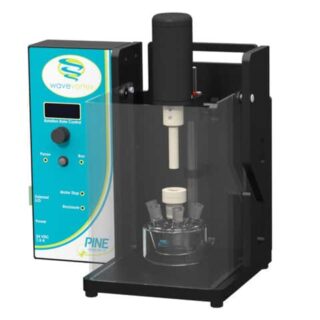
WaveVortex 10 Electrode Rotator
AF01WV10 -
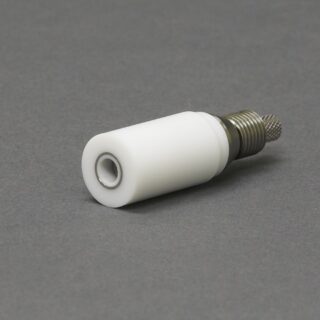
E6R1 Series ChangeDisk Rotating Ring-Disk Electrode, Platinum (Pt) Ring, PTFE shroud
AFE6R1PT -

RDE/RRDE Disk Insert, 5 mm OD x 4 mm thick, Glassy Carbon (GC)
AFED050P040GC -
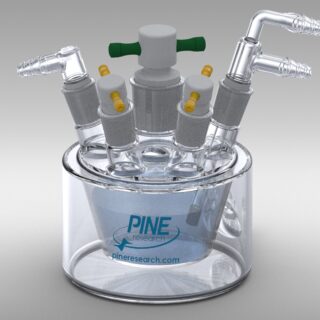
Rotating Disk/Ring-Disk Cell Kit, Standard Volume, Water Jacket
AKCELL3 -
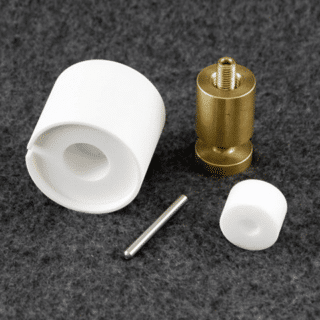
E5/E6 Series ChangeDisk Electrode Toolkit
AFE6K050 -
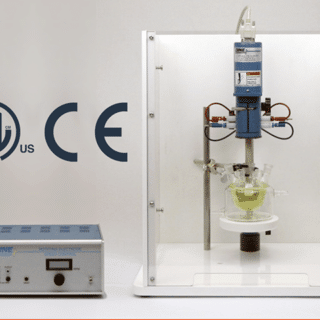
Modulated Speed Rotator (MSR)
AFMSRCE
